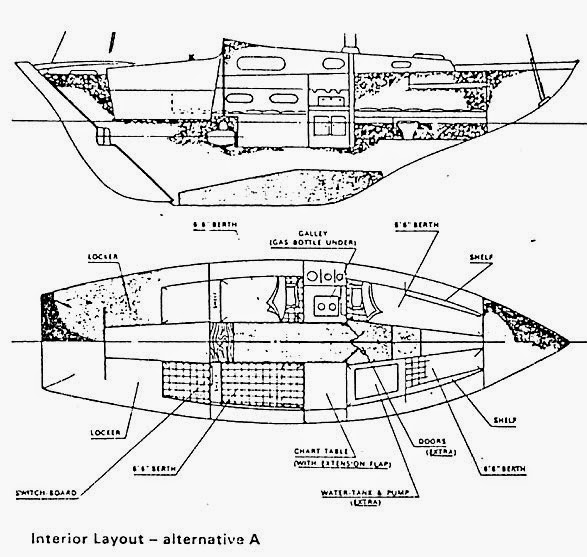When I purchased the boat the engine was the original Peters 6HP engine. It is a great little thing which works as the Dutch say as a small sunshine :) It was even possible to start the engine completely manually. The cruising speed on engine was 3 kn. At this time when Sasha has been produced I assume it has been fine, because the engine has been used just to get in and out of the harbour. However, since I plan to use the boat in the tidal water for the safety reasons I decide to upgrade the engine. I did a check in Internet and at the end I narrowed the options to 6 possibilities.
1.
Beta 10,
2 cylinder, naturally aspirated, diesel propulsion engine
developing 10 bhp at 3,000 rpm with a swept volume of 479 cc;
2. Beta 14, 2 cylinder, naturally aspirated, diesel propulsion engine
developing 13.5 bhp at 3,600 rpm with a swept volume of 479 cc. The big brother of Beta 10, same size but more powerful;
Both Beta 10 and Beta 14 engines are recommended by Jeremy Rogers on his web site as a replacement engines for Contessa 26.
3.
Sole Mini 11, Basis Mitsubishi, 2 cylinder 11HP / 8,2kW;
4.
Yanmar 1GM10, 1 cylinder, 6 kW / 9 HP;
5.
Nanni 2.10, 2 cylinder 10 HP, 7.36 KW;
6.
Vetus M2.13,
2 cilinder, 8,8 KW (12 PK);
The price of the new engine is similar for all the models and ranges inclusive the taxes between 6-7000 Euro.
I decided that it will be too much for me, and started looking for good second hand engine. I found nice second hand fully revised Yanmar1GM10 from a Yanmar dealer near Kagerplassen estimated to be 10-15 years old and on 500- 1000 working hours from a boat used in "Westeinderplassen" lakes in Holland.
I started reading about this engine, and apparently it has been used in a lot of the Canadian versions of Contessa 26.
Fortunately it appeared to be a nice engine:
a. The lightest and most compact marine inboard engine around.
b. Proven reliability. A very simple and tough engine that when
properly maintained and supplied with clean fuel and water will never
let you down.
c. Relatively cheap to maintain and run. A 1gm 10 uses about 1 litre
per hour at 2600 RPM. This rises to about 1 3/4 litres at 3000 RPM.
d. Spares are easy to come by as the Yanmar network is worldwide.
e. If something does go wrong there is nearly always a Yanmar
specialist around. Or a tractor mechanic who will understand the engine.
It only has one cylinder so there is less to go wrong.
f. Raw water cooling can be an advantage because its simpler; there
is only one water pump and the cooling system is very basic. Thermostat
and cooling system are easy to check and replace.
There is a really nice blog about this particular type of engines:
Yanmar 1GM10
Ok, now is time to find someone to install it :)























